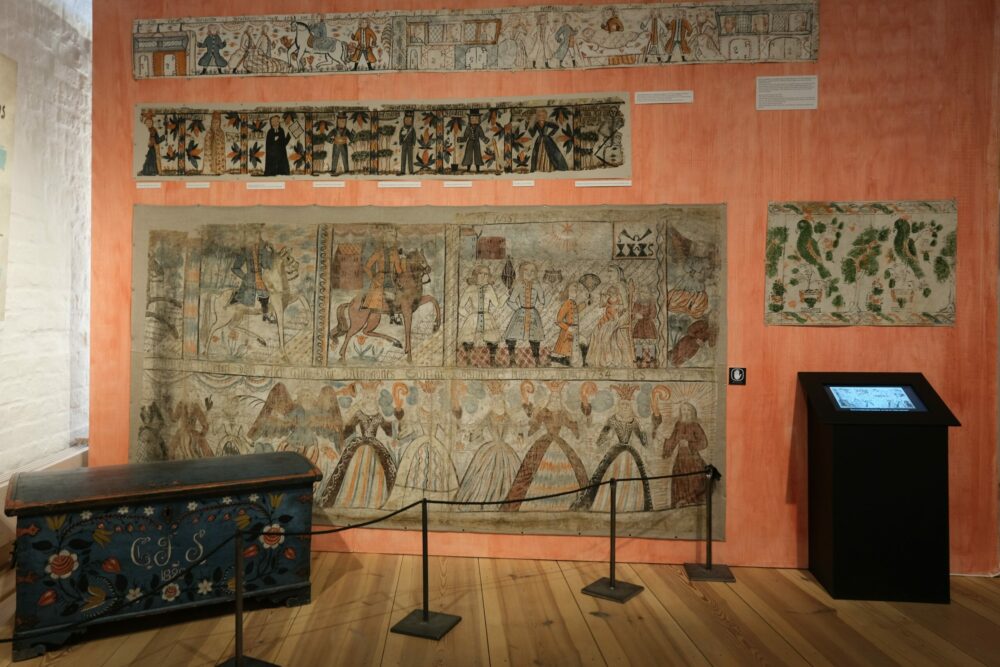12. Wall Hangings
Wall hangings were hung in farmers cottages in Halland, Småland, Blekinge och Västergötland. We call them South Swedish wall hangings to distinguish them from the Dalacarlia paintings of northern Sweden. The paintings are unique folk art. They were painted by country people for country people and it is the artistic world of farmers that we see.
Despite the fact that the images are often from the Bible they reflect the lives of farmers 200 years ago; weddings, clothing and household tools. The images are often full of drama and humor. The most common images are those of the Three Wise Men, the Wedding in Qana and the Ten Virgins.
The first South Swedish wall hangings began to be painted around 1730 in Unnaryd in the county of Halland. The custom of having wall hangings was most widespread between 1770 and 1870. The fact that farmers could now afford something more than the bare necessities of life was thanks to the peace of 1820 and the improved lives of farmers in the 18th and 19th centuries. After 1870 farmers instead wanted printed pictures on their walls.
The south Swedish wall hangings were distributed around the same areas as the architectural style known as the ”högloftsstuga”. In these buildings the family lived in one room without a window in the wall, there was only a skylight. This meant that there were long walls to hang the paintings on and most south Swedish wall hangings are indeed long. The living room had a fireplace making the indoors very smoky. This meant that the hangings could only be put up at Christmas and on other important occasions.
There were over a hundred wall painters in southern Sweden many of whom were women. They learned from each other and there were various schools of painting. The paintings were originally made on fabric but from the early 19th century paper was used. The painter bought most pigments and then mixed them to make the paint. Like other artists the wall painters had their sources of inspiration. Illustrated bibles and other printed images of the times were often used as inspiration. But the painters converted the image into their own style. There are also many original compositions. Historically speaking the wall hangings are their own style of art.

